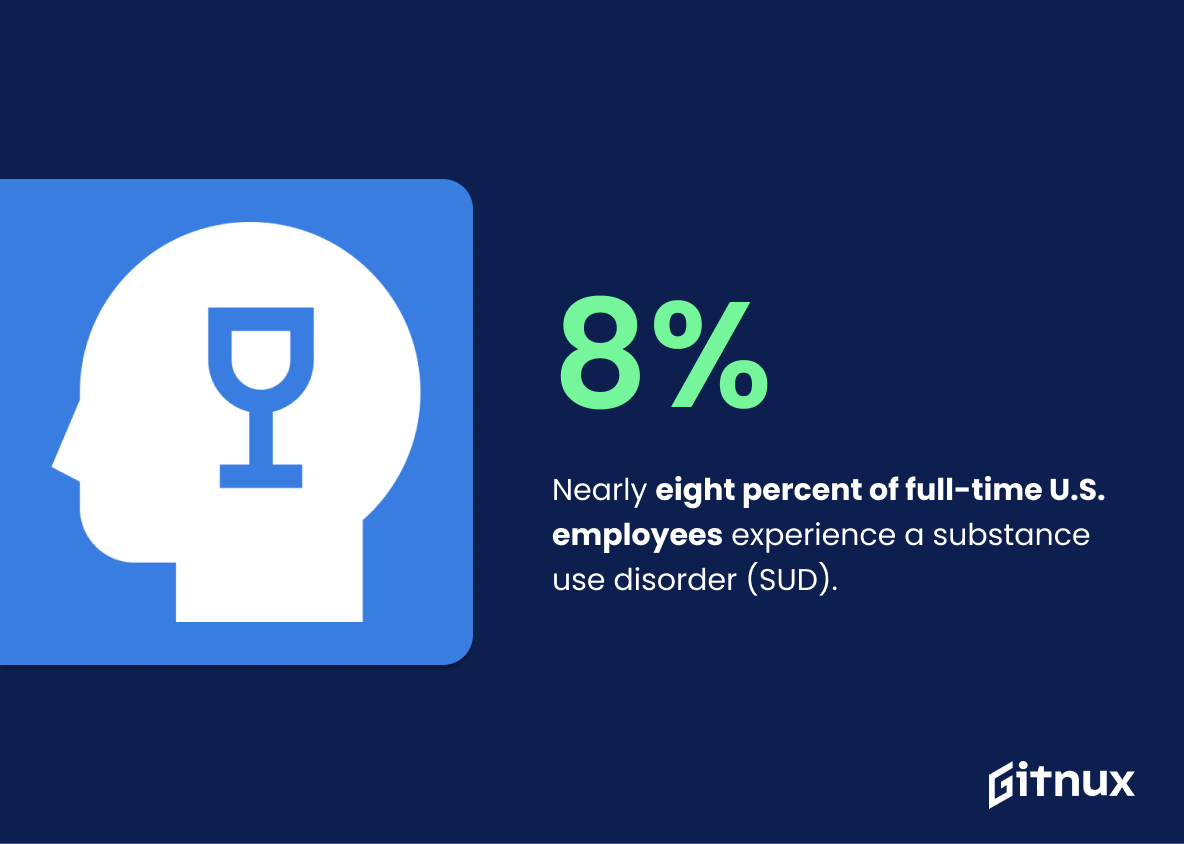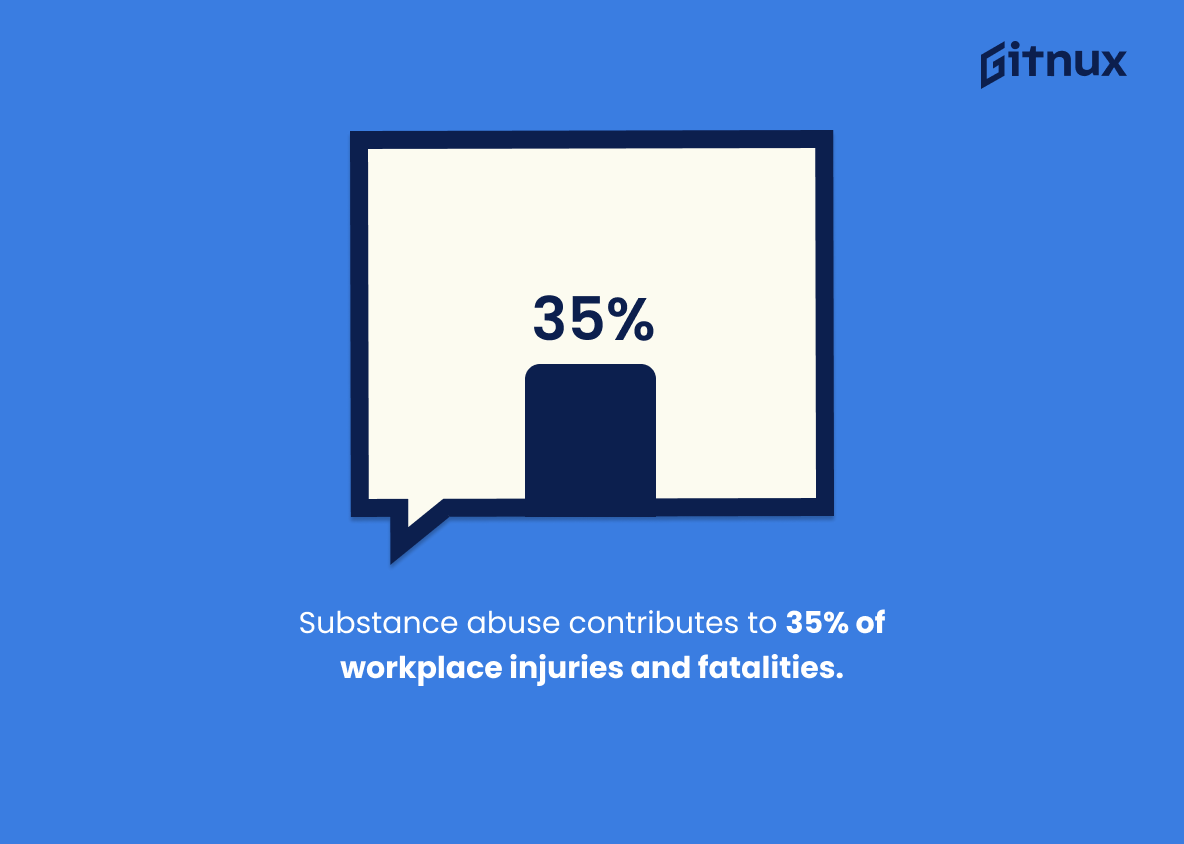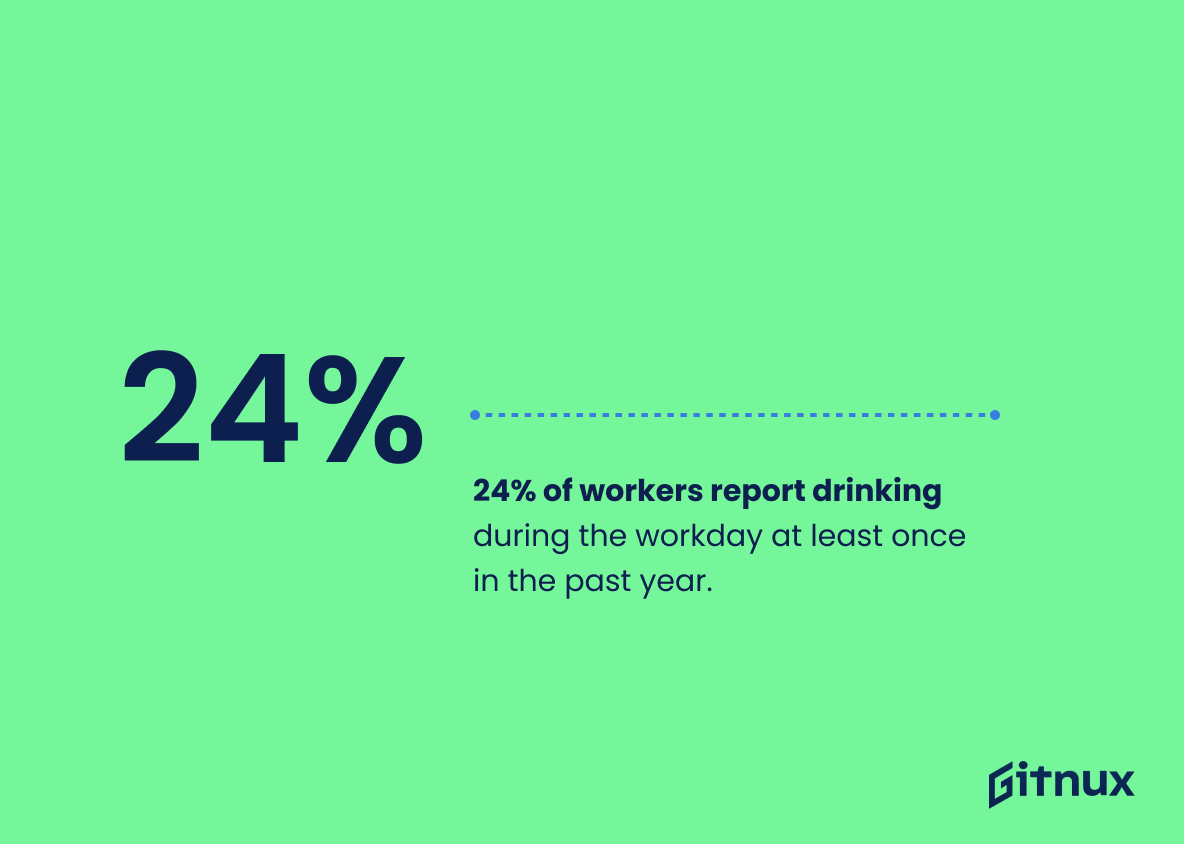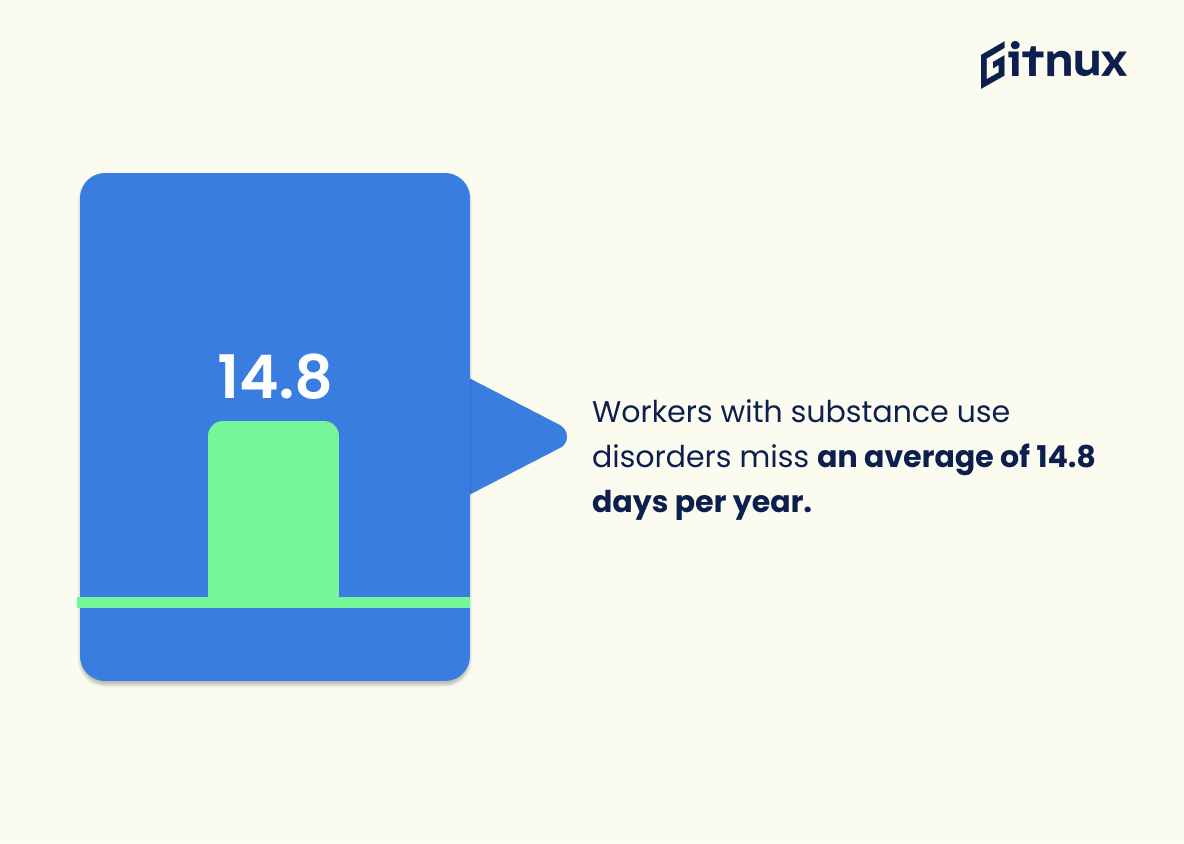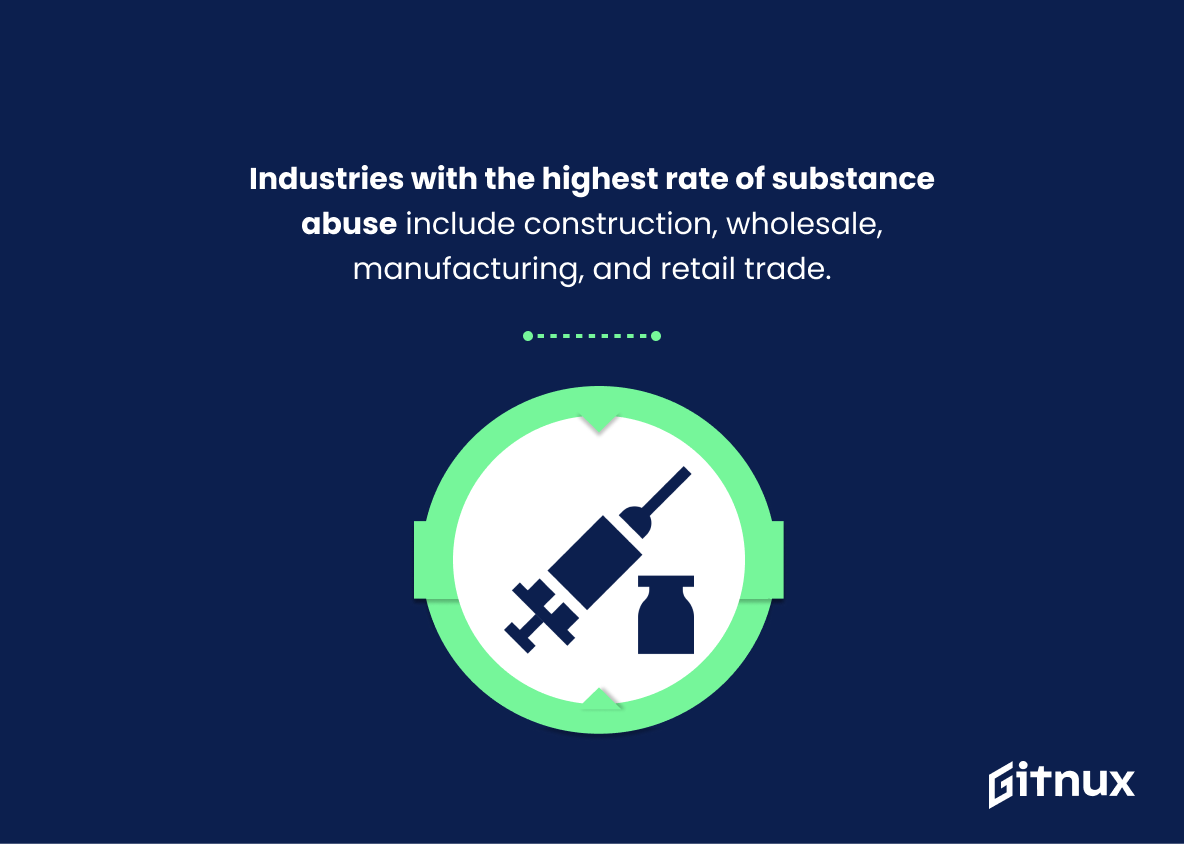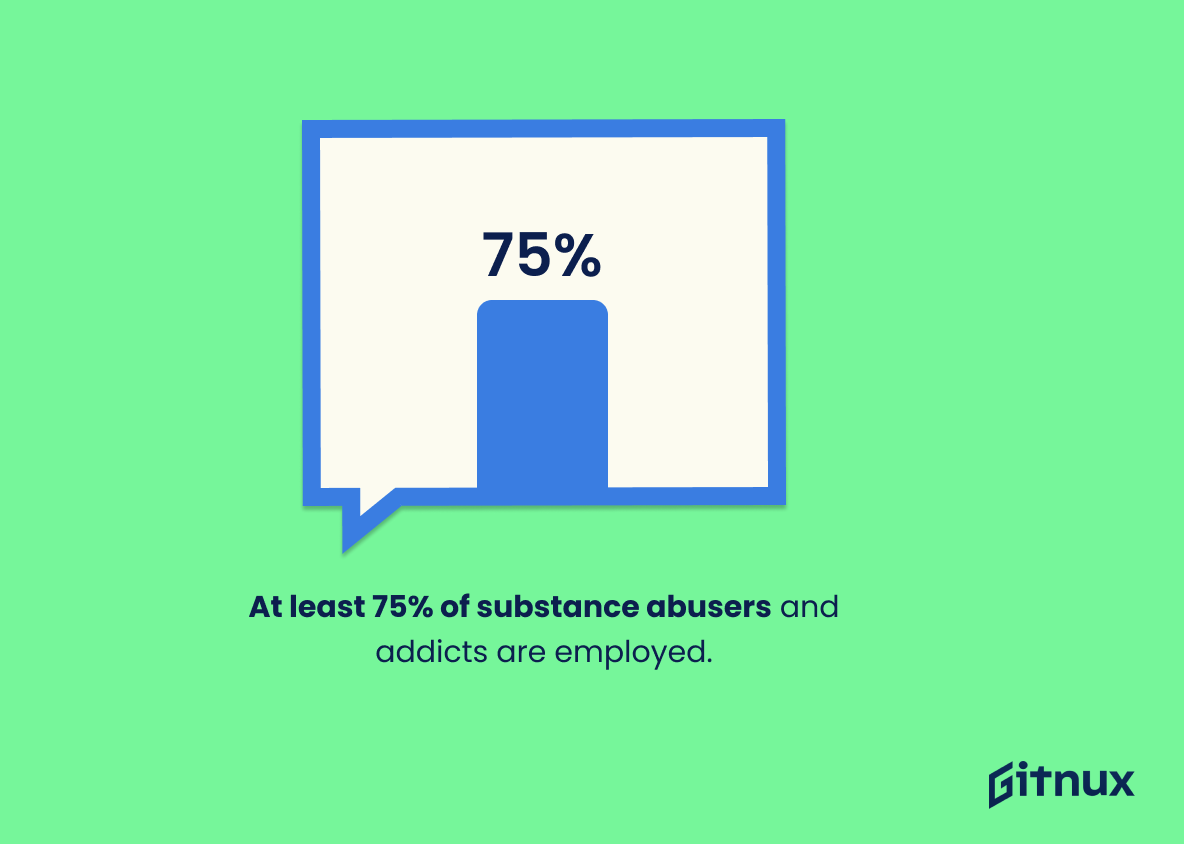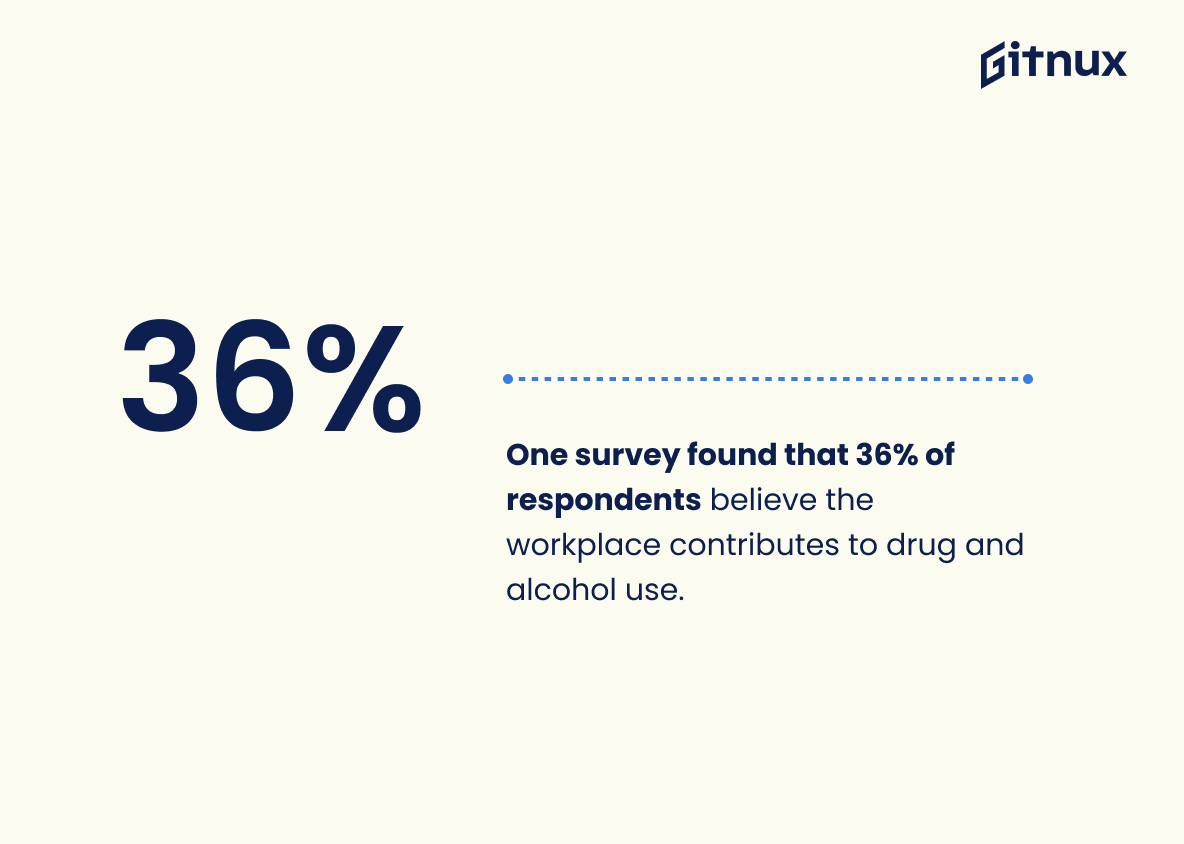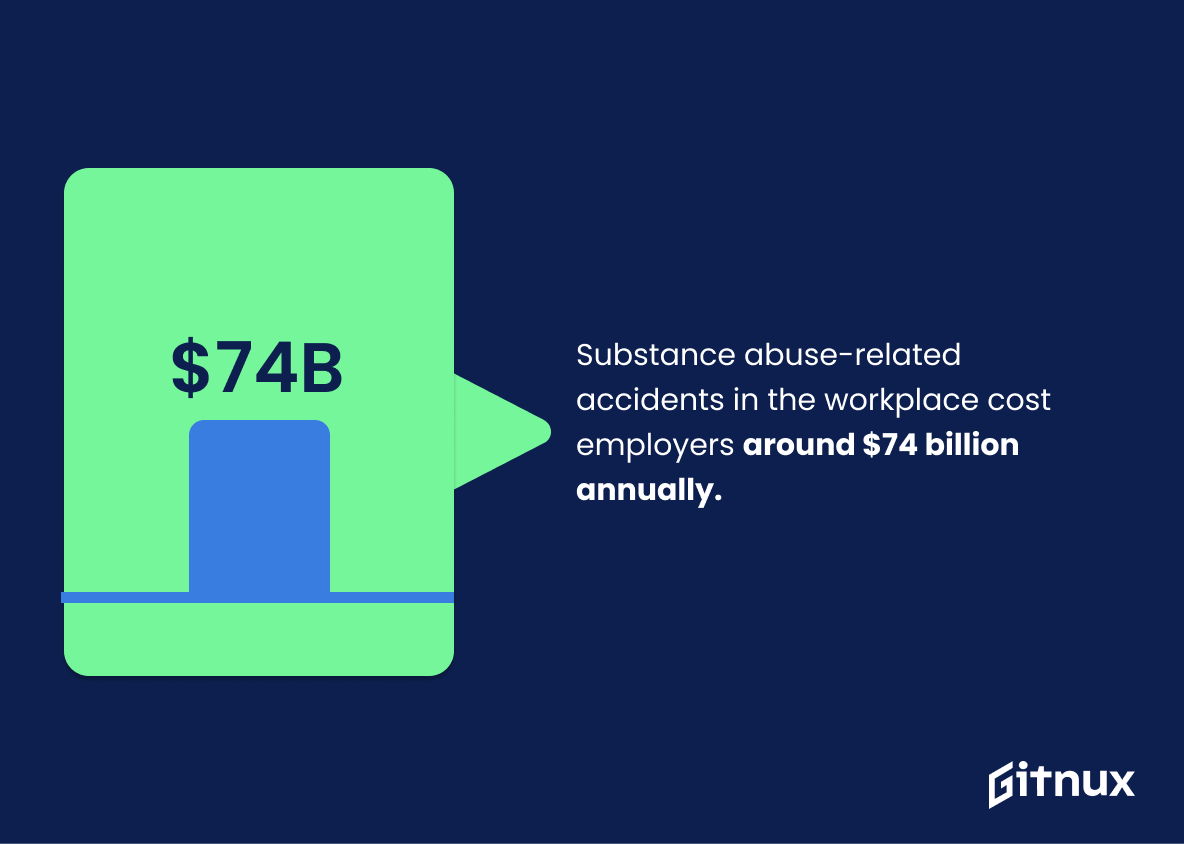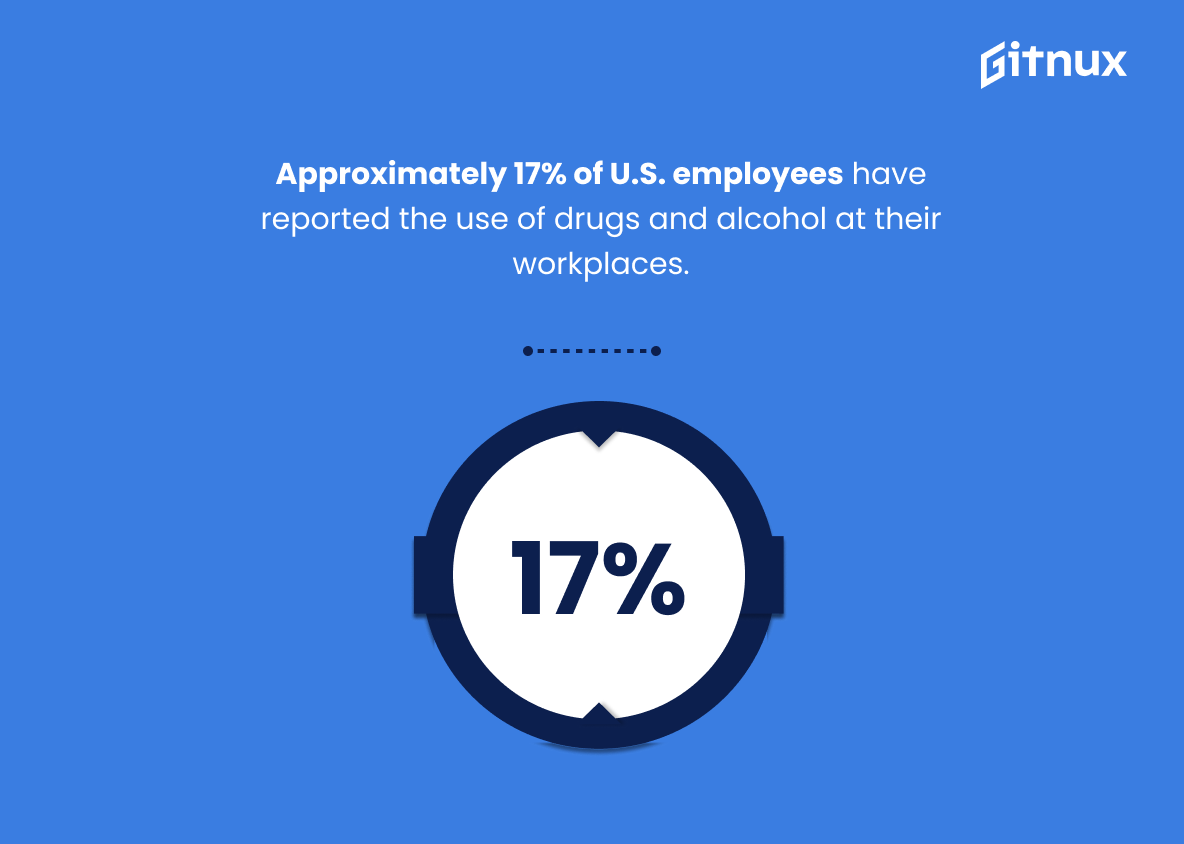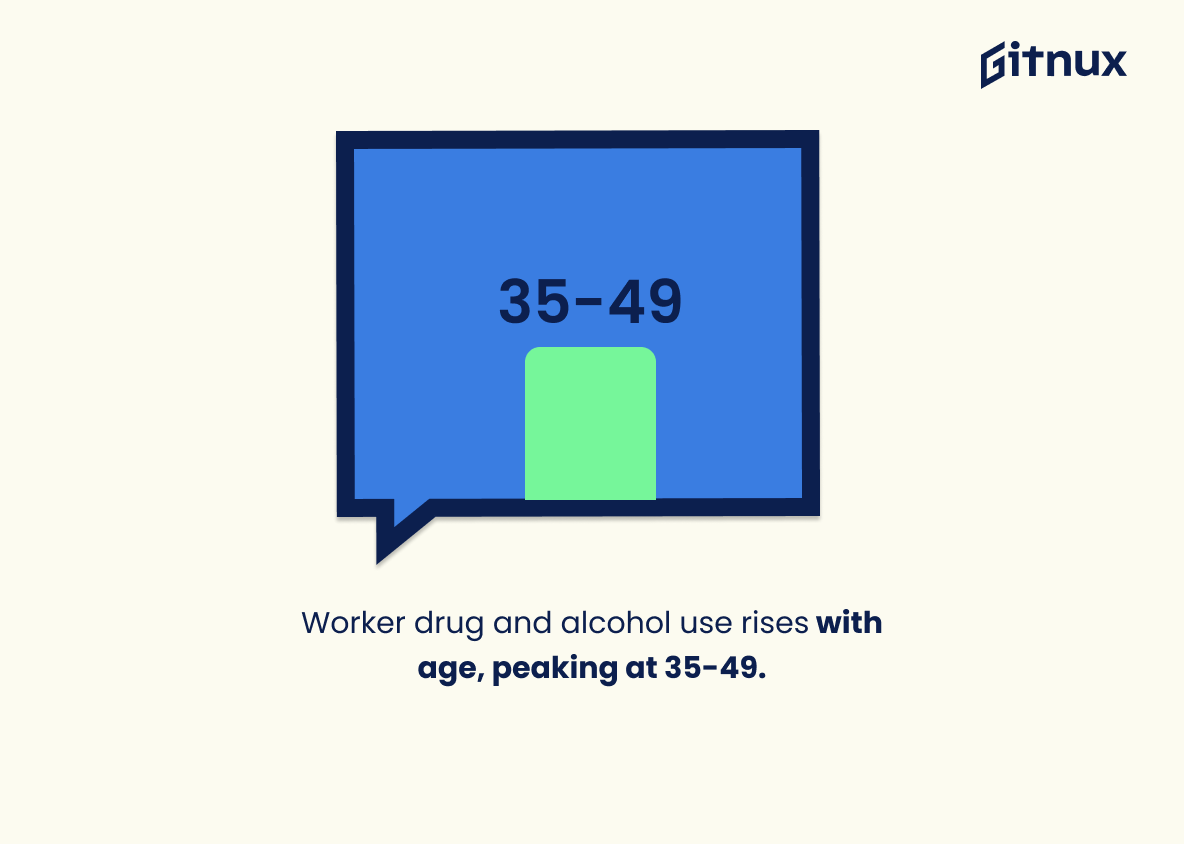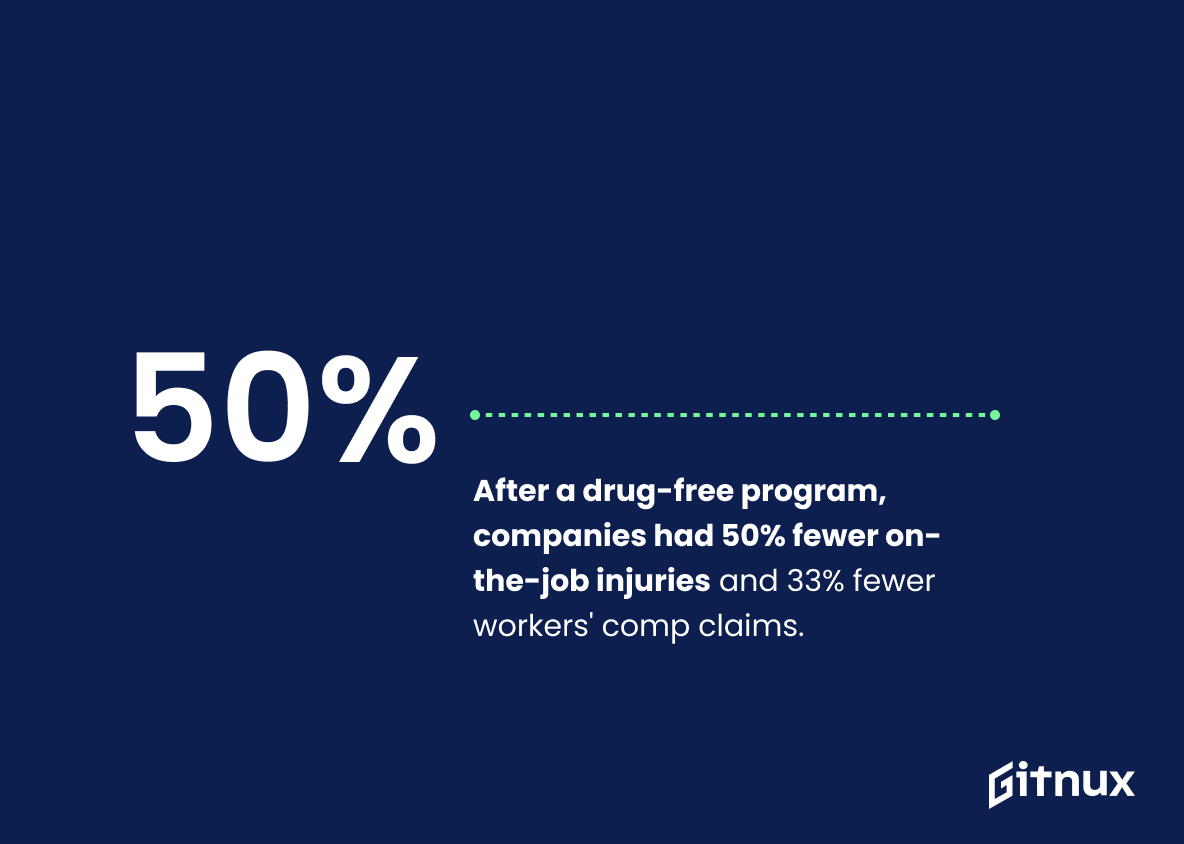Drug and alcohol use in the workplace is a serious issue that can have far-reaching consequences for both employers and employees. According to statistics from various sources, substance abuse issues are linked to higher rates of absenteeism, with employees 2.5 times more likely to be absent due to such problems according to the National Safety Council (NSC). It has been estimated that 70% of illicit drug users in the United States are employed, while nearly 8% of full-time U.S. workers experience a Substance Use Disorder (SUD). Furthermore, substance abuse contributes significantly towards workplace injuries and fatalities at 35%, as well as costing companies an estimated $81 billion annually due to employee misuse of drugs or alcohol.
Other studies show 24% of workers report drinking during work hours at least once over the past year; those with SUDs miss 14 days on average per year; 9.5 percent tested positive for drugs/alcohol during random testing; 6 percent reported impaired drug/alcohol use within 12 months; industries like construction, wholesale trade manufacturing & retail had highest rate of substance abuse among their workforce – small businesses being less likely than larger ones when it comes offering education programs about this topic – 75 %of abusers & addicts were found employed ; 36 %believed workplaces contribute towards drug /alcohol usage , 17 %reported using them at work place . Drug free program implementation saw 50 %decrease in job related injury claims & 33 reduction in compensation claims . Age wise 39 was seen most prone group followed by 35 – 49 age bracket .
It’s clear from these figures that there is much room for improvement when it comes addressing this problem head on through effective policies and procedures which will help reduce its impact not only financially but also socially across all sectors including private industry , government agencies etc..
This statistic from the National Safety Council (NSC) highlights the importance of addressing substance abuse issues in the workplace. It demonstrates that employees with substance abuse issues are more likely to be absent from work, which can have a significant impact on productivity and morale. This statistic is a reminder that employers should take proactive steps to ensure that their workplace is free from drug and alcohol use, and that employees with substance abuse issues are provided with the necessary support.
It has been estimated that 70% of the illicit drug users in the United States are employed.
This statistic is a stark reminder of the prevalence of drug and alcohol use in the workplace. It highlights the fact that illicit drug use is not limited to certain demographics, but is instead a widespread issue that affects people from all walks of life. This statistic is a call to action for employers to take steps to ensure that their workplaces are safe and drug-free.
Drug And Alcohol Use In The Workplace Statistics Overview
Nearly eight percent of full-time U.S. employees experience a substance use disorder (SUD).
This statistic is a stark reminder of the prevalence of substance use disorders in the workplace. It highlights the need for employers to be aware of the potential for SUDs among their employees and to take steps to ensure a safe and healthy work environment. It also serves as a reminder that substance use disorders can affect anyone, regardless of their job or position, and that employers should be prepared to provide support and resources to those who may be struggling with addiction.
Substance abuse contributes to 35% of workplace injuries and fatalities.
This statistic is a stark reminder of the dangers of substance abuse in the workplace. It highlights the fact that drug and alcohol use can have serious consequences, not only for the individual, but for the safety of their colleagues and the productivity of the workplace as a whole. It is a sobering reminder of the importance of having policies in place to prevent and address drug and alcohol use in the workplace.
24% of workers report drinking during the workday at least once in the past year.
This statistic is a stark reminder of the prevalence of drug and alcohol use in the workplace. It highlights the need for employers to take proactive steps to address the issue and ensure a safe and healthy work environment for all employees.
Workers with substance use disorders miss an average of 14.8 days per year.
This statistic serves as a stark reminder of the impact that substance use disorders can have on workplace attendance. It highlights the need for employers to be aware of the potential for substance use disorders in their workforce and to take steps to ensure that employees are supported in their recovery.
Industries with the highest rate of substance abuse include construction, wholesale, manufacturing, and retail trade.
This statistic is a stark reminder of the prevalence of substance abuse in the workplace. It highlights the fact that it is not just certain industries that are affected by drug and alcohol use, but that it is a problem that is widespread across many different industries. This is an important reminder that employers need to be aware of the potential for substance abuse in their workplace and take steps to address it.
Small companies are less likely to offer drug and alcohol education programs, with only about 42% providing such resources.
This statistic is a stark reminder of the importance of drug and alcohol education programs in the workplace. It highlights the fact that many small companies are not providing their employees with the necessary resources to make informed decisions about their health and safety. This lack of education can lead to an increased risk of drug and alcohol abuse in the workplace, which can have serious consequences for both the company and its employees.
At least 75% of substance abusers and addicts are employed.
This statistic is a powerful reminder that drug and alcohol use in the workplace is a pervasive issue. It highlights the fact that substance abuse and addiction are not limited to those who are unemployed, but rather, are present in the lives of many who are employed. This statistic serves as a reminder that employers must remain vigilant in their efforts to prevent and address drug and alcohol use in the workplace.
One survey found that 36% of respondents believe the workplace contributes to drug and alcohol use.
This statistic is a powerful indicator of the prevalence of drug and alcohol use in the workplace. It suggests that a significant portion of the population is aware of the issue and believes it to be a problem. This statistic is an important piece of evidence that can be used to support the argument that drug and alcohol use in the workplace is a serious issue that needs to be addressed.
Substance abuse-related accidents in the workplace cost employers around $74 billion annually.
This statistic serves as a stark reminder of the immense financial burden that substance abuse-related accidents in the workplace can have on employers. With such a hefty price tag, it is clear that drug and alcohol use in the workplace can have serious consequences for businesses.
Approximately 17% of U.S. employees have reported the use of drugs and alcohol at their workplaces.
This statistic is a stark reminder of the prevalence of drug and alcohol use in the workplace. It highlights the need for employers to be aware of the potential risks associated with such use and to take steps to ensure that their workplaces are safe and secure. It also serves as a warning to employees to be mindful of their own behavior and to be aware of the potential consequences of using drugs and alcohol in the workplace.
Employees who misuse prescription drugs have over 1.5 times more days of absence compared to employees without a prescription drug problem.
This statistic is a stark reminder of the impact that prescription drug misuse can have on workplace attendance. It highlights the importance of employers taking proactive steps to address the issue of drug and alcohol use in the workplace, as it can have a significant impact on employee productivity and attendance.
The likelihood of a worker using drugs or alcohol increases with age, with the highest prevalence among those aged 35 to 49.
This statistic is a crucial piece of information when it comes to understanding the prevalence of drug and alcohol use in the workplace. It highlights the fact that older workers are more likely to use drugs or alcohol, and that employers should be aware of this when it comes to creating policies and procedures to address drug and alcohol use in the workplace.
After implementing a drug-free workplace program, companies saw a 50% decrease in on-the-job injuries and a 33% reduction in workers’ compensation claims.
This statistic is a powerful testament to the effectiveness of drug-free workplace programs. It shows that by implementing such a program, companies can significantly reduce the number of on-the-job injuries and workers’ compensation claims. This is an important statistic to consider when discussing the impact of drug and alcohol use in the workplace.
Conclusion
The statistics presented in this blog post demonstrate the prevalence of drug and alcohol use in the workplace, as well as its associated costs. Substance abuse can lead to increased absenteeism, higher rates of injury and fatalities on the job, decreased productivity, and a greater financial burden for employers. It is clear that substance misuse has serious implications for businesses both large and small; therefore it is important for organizations to take proactive steps towards creating a safe work environment by implementing policies such as drug-free workplace programs which have been proven effective at reducing incidents related to substance abuse.
References
0. – https://www.shrm.org
1. – https://www.dol.gov
2. – https://www.verywellmind.com
3. – https://www.nsc.org
4. – https://www.recovery.org
5. – https://www.samhsa.gov
6. – https://www.rehabs.com
7. – https://www.alcoholrehab.com
